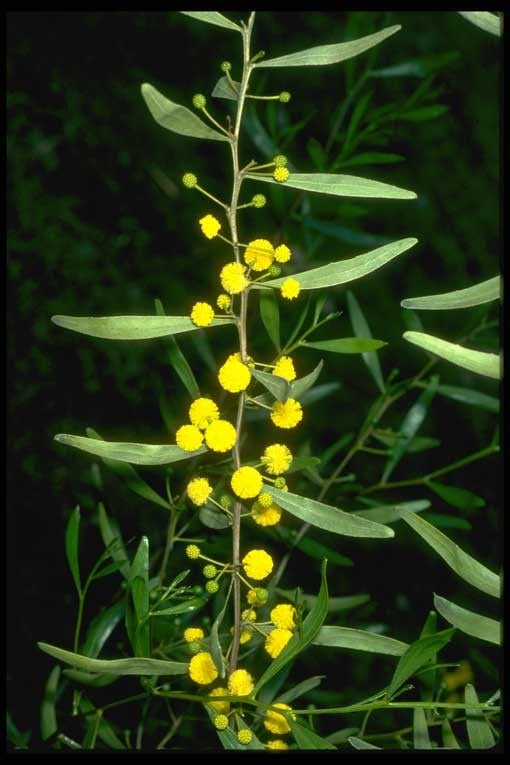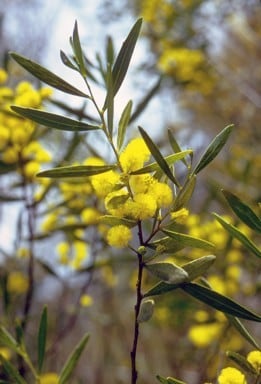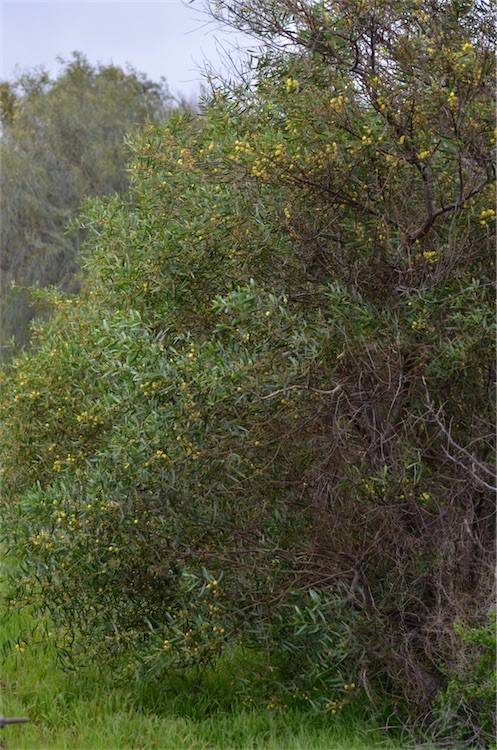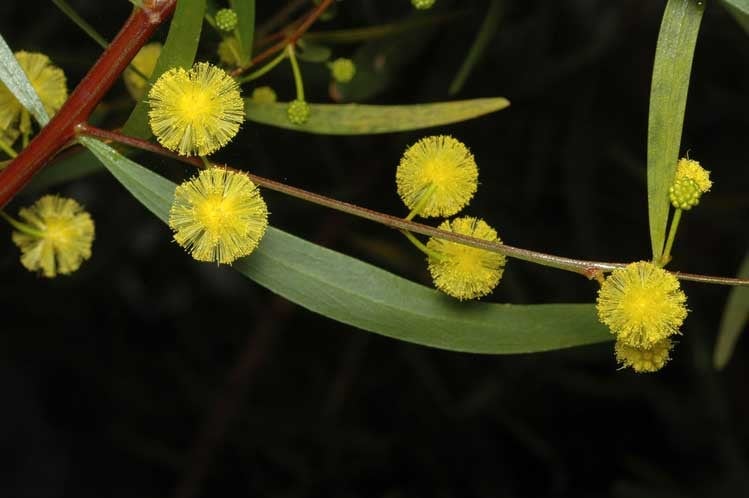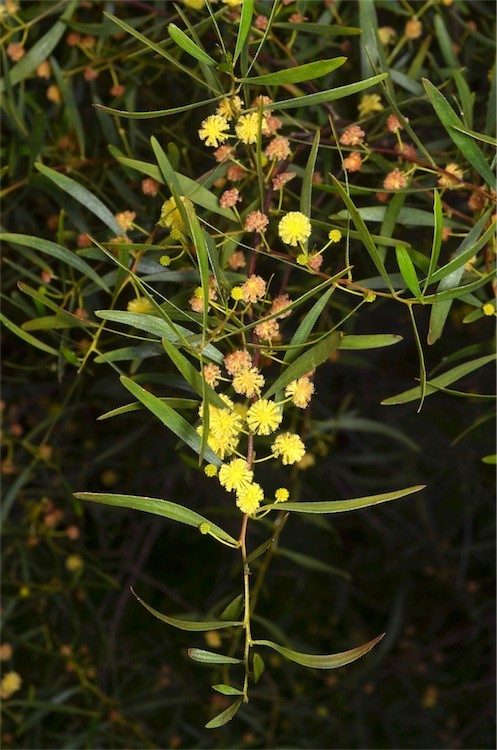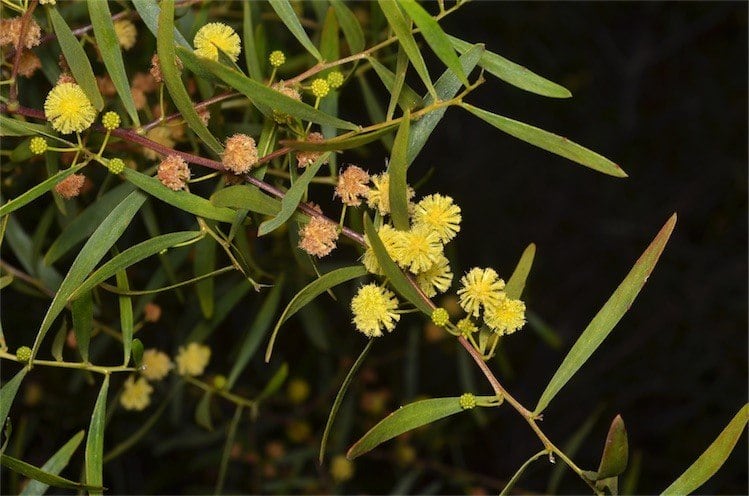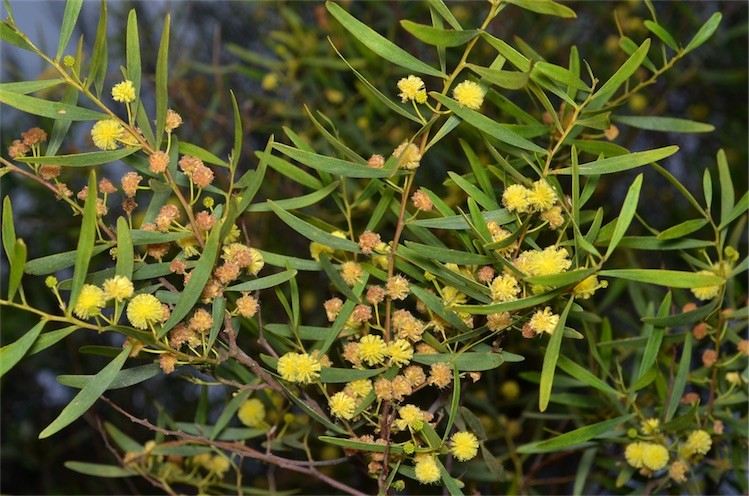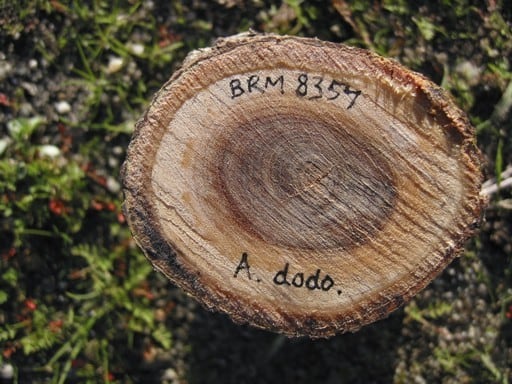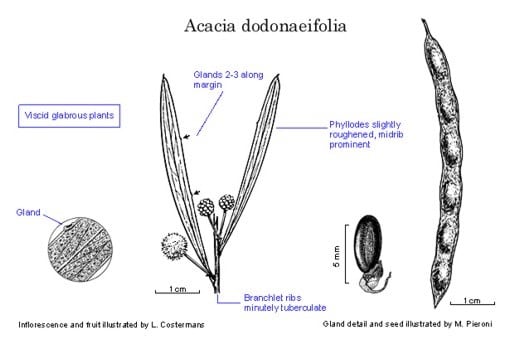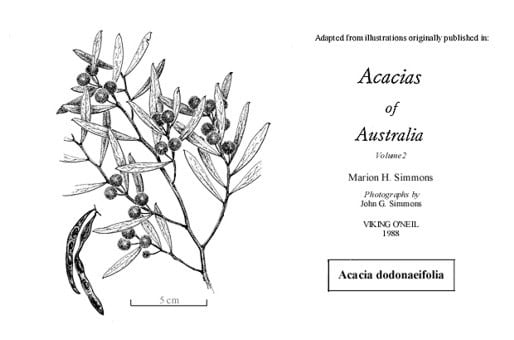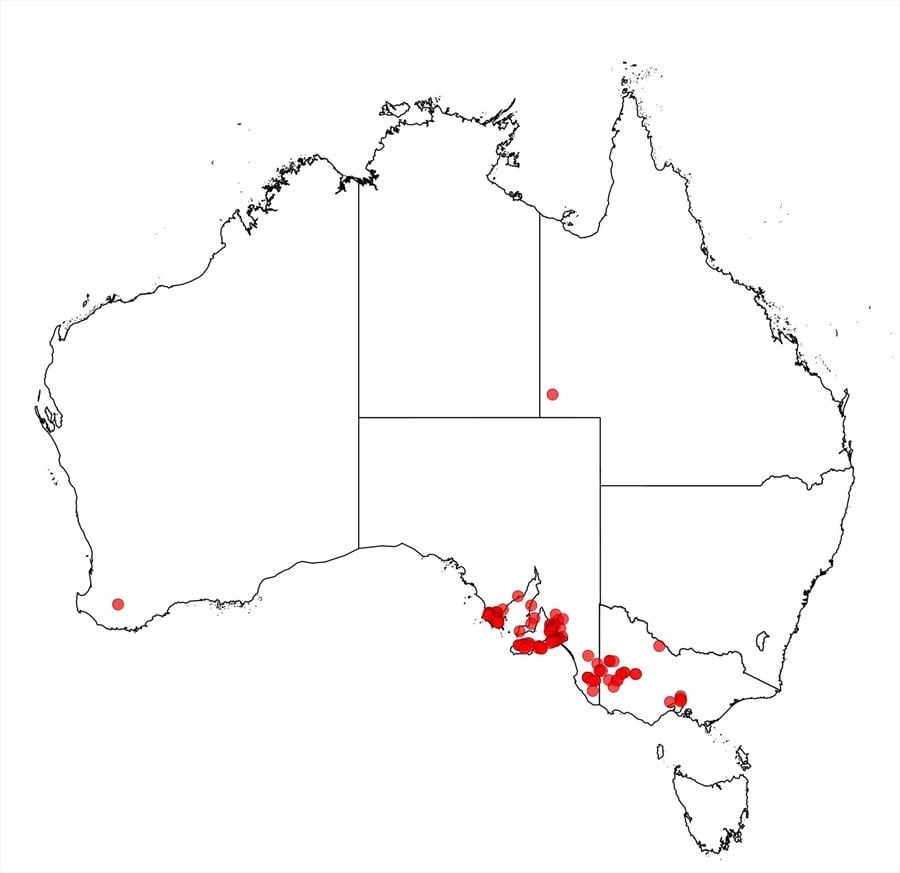Acacia dodonaeifolia (Pers.) Balb.
WATTLE
Acacias of Australia
Common Name
Sticky Wattle, Hop-leaved Wattle
Family
Fabaceae
Distribution
Scattered, mainly in near-coastal areas, from Eyre Peninsula E to Naracoorte and Keith, S.A. According to T.J.Entwistle et al., in N.G.Walsh & T.J.Entwistle (eds), Fl. Victoria 3: 626 (1996), the species is naturalised and spreading in western Vic. and it is not possible to ascertain with certainty whether the records from earlier this century are plantings or naturalised.
Description
Viscid glabrous shrub or tree 2–6 m high. Branchlets vernicose when young; ribs minutely tuberculate. Phyllodes normally narrowly elliptic, straight to shallowly incurved, 4–8 cm long, 5–11 mm wide, obscurely punctate, slightly roughened, often sparsely tuberculate, glabrous; midrib prominent; lateral nerves obscure, oblique, frequently coalescing distally to form an almost continuous intra-marginal nerve; glands 2 or 3, with lowermost 0–5 mm above pulvinus and the others often slightly raised. Inflorescences simple and 2 per axil or 2‑headed racemes with axes to 5 mm long; peduncles 7–16 mm long; basal bract persistent; heads globular, 36–46-flowered, bright yellow. Flowers 5-merous; sepals united. Pods linear, to 13 cm long, 5–7 mm wide, thinly coriaceous, light brown. Seeds longitudinal, oblong-elliptic, 4.3–5 mm long, shiny, dark brown; aril folded at end of seed.
Habitat
Usually grows in sand or loam, in eucalypt woodland and open forest.
Specimens
S.A.: Marble Ra., c. 50 km SW of Port Lincoln, C.R.Alcock 3451 (AD, GZU); Goolwa, c. 65 km SSE of Adelaide, N.Gemmell 12 (AD); Keith, R.L.Specht 1578 (AD).
Notes
Information on the biological and ecological features, and the utilisation potential, of this species is given in B.R.Maslin and M.W.McDonald, AcaciaSearch: Evaluation of Acacia as a woody crop option for southern Australia, RIRDC Publication No. 03/017, 76–79 (2004).
This species is a member of the A. verniciflua complex and allied to A. leprosa which is distinguished by its non-tuberculate branchlet ribs, solitary basal gland, smoother phyllodes with obvious shallow resinous pits and commonly puberulous peduncles.
Possible natural hybrids between A. dodonaeifolia and A. paradoxa are recorded from the Eyre Peninsula, S.A., by D.J.E.Whibley & D.E.Symon, Acacias S. Australia 2nd edn, 58 (1992); see also A. paradoxa.
FOA Reference
Data derived from Flora of Australia Volumes 11A (2001), 11B (2001) and 12 (1998), products of ABRS, ©Commonwealth of Australia
Author
Minor edits by B.R.Maslin & J.Rogers
B.R.Maslin
This identification key and fact sheets are available as a mobile application:
URL: https://apps.lucidcentral.org/wattle/
© Copyright 2018. All rights reserved.
